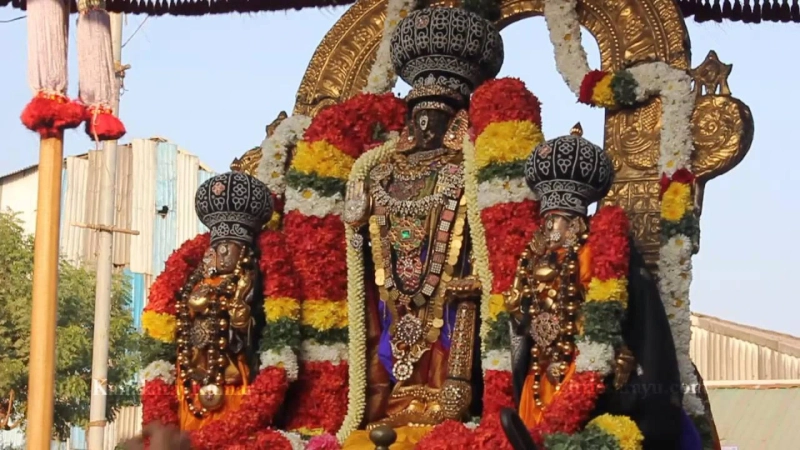Chennai has various temples dedicated to Lord Vishnu and his avatars. One such holy place is the Parthasarathy temple that is one of the oldest ones. Its history, the idols that reside, and the legend associated make it an interesting place to be visited by devotees. Let’s hear out more about this Shrine-
History
The Parthasarathy Temple was first built in the 8th century by King Narasimhavarman, a part of the Pallava dynasty. The structure is located in Thiruvallikeni, Chennai that is a house for five avatars of Vishnu, namely Narasimha, Rama, Gajendra Varadaraja, Ranganatha, and Krishna.
Here the main deity is Krishna, and hence the temple’s name is dedicated to him “Parthasarathy.” It means “charioteer of Arjuna” that Krishna played a role in the epic Mahabharatha as a charoite of Arjuna.
Several engravings date back to the 8th century from the time of Dantivarman, who was a devotee of Vishnu. In the 9th century, Thirumangai Alvar also contributed to the building of the temple. The references also depict the establishment of more shrines and the restoration during 1564 CE.
The temple majorly signifies the inscriptions from the Chola period, which means it gained a lot of development during the Chola dynasty.
The Legend
According to one of the legends, there was a King called Sumathi, who was a devotee of Vishnu and particularly Sri Krishna. He presented his wish to meet Krishna, but for that, he would have to walk miles and miles crossing many mountains, rivers, and forests. This made him disappointed, and he thought that he wouldn’t be able to meet Krishna.
That night, Krishna appeared in his dream and told him about a place called Bridharanyam. Going all eager, King followed what Krishna said, and there he found Lord Krishna, the charioteer to Arjuna. He saw Krishna himself, and he got all awestruck and thanked Krishna from all his heart.
The King decided to build a temple in that same spot, and hence Parthasarathy Temple came to light.
The Divine Description of the Shrine
The strange feature about the main deity here is his face with a mustache. Yes, the idol here can be seen as having a mustache, unlike any other deities in any temples. The icon is made in a standing position holding a conch in the right hand and the left hand pointing to the feet.
The Lord indeed looks glorious with a tall frame along with broad shoulders. His appearance seems even majestic with a white mustache, bigger eyes, a garland of Saligramam and Aadhiseshan, knife around the waist, and having the image of his beloved Laxmi in his chest.
To her right, stands Balarama with decoration. To his left is brother Sathyagi, the son Prathyumnan, and the grandson Aniruthan. During the Vaikuntha Ekadashi, from the sixth day to the tenth day, the deity is worshipped without a mustache. In the temple, there is a separate entrance that reaches Krishna and Narasimha as well.
The face of the idol can be seen with some marks. The story behind it goes like the sculpture tried to design the face many times, but it always came up with some pimples. He started getting worried, and that night, Lord Venkatakrishnar appeared in his dream. He told the sculpture that since he received many injuries on the face by the arrows during the Mahabharata war, the marks would remain.
There is one more thing that can be noted as a fault in the sculpture. The toe that is next to the big toe of the left leg is without a nail. This was also a result of the arrow shot by Bhishma that hit the nail of Krishna. The idol can also be seen having a scar near the hip as Maa Yashoda tied a rope around the hip of Krishna.
The temple can be visited from 6 am to 12 pm and 4 pm to 9 pm. There are different festivals that are celebrated majorly during which the temple can be seen in its ultimate beauty. Bramotsavam and Vaikuntha Ekadasi are such festivals, along with Aadi- Pournami and Aavani-Sri Jayanthi.
Astropedia brings you information about different temples in different parts of India. Explore more about South Indian temples and the presiding deities, the right time to visit, and what significance they hold.



